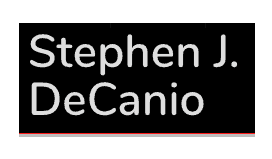14 Aug Games between humans and AIs
Abstract
Various potential strategic interactions between a “strong” Artificial intelligence (AI) and humans are analyzed using simple 2 × 2 order games, drawing on the New Periodic Table of those games developed by Robinson and Goforth (The topology of the 2 × 2 games: a new periodic table. Routledge, London, 2005). Strong risk aversion on the part of the human player(s) leads to shutting down the...

